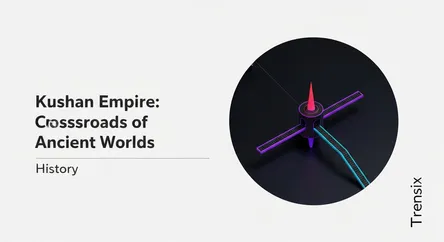History
Kushan Empire: Crossroads of Ancient Worlds

Discover the Kushan Empire, a civilization that connected East and West and became a melting pot of cultures and a crucial hub for the Silk Road.
What is it?
The Kushan Empire was a vast, syncretic empire that flourished from approximately the 1st to the 3rd centuries CE. Formed by the Yuezhi people in the territories of ancient Bactria, it expanded to cover much of present-day Afghanistan, Pakistan, and northern India, reaching into Central Asia. At its zenith under Emperor Kanishka, the empire was a major Eurasian power, comparable to Rome, Persia, and Han China. The Kushans established control over crucial trade routes, linking the Indian Ocean with the Silk Road and fostering a remarkable fusion of Greek, Persian, Indian, and Central Asian cultures.
Why is it trending?
The Kushan Empire is historically significant for its pivotal role as a center of global exchange. It controlled a critical section of the Silk Road, facilitating extensive trade and diplomatic contacts between the Roman Empire and Han China. This strategic position not only brought great wealth, evidenced by their extensive gold coinage, but also made them a hub for cultural transmission. The empire's religious tolerance and syncretism are notable; rulers patronized Zoroastrianism, Hinduism, and especially Buddhism. They were instrumental in the development and spread of Mahayana Buddhism and the unique Greco-Buddhist Gandhara school of art.
How does it affect people?
The Kushans' influence had a lasting impact on world culture. Their patronage was crucial for the spread of Mahayana Buddhism from India into Central Asia and China, a legacy that shaped the religious landscape of East Asia. The development of Gandhara art under their rule produced some of the first human representations of the Buddha, blending Greco-Roman styles with Buddhist subjects. For the people within the empire, the "Pax Kushana" provided a period of relative peace and security that encouraged flourishing urban centers and long-distance trade, creating a cosmopolitan society where diverse languages, religions, and artistic traditions coexisted and blended.